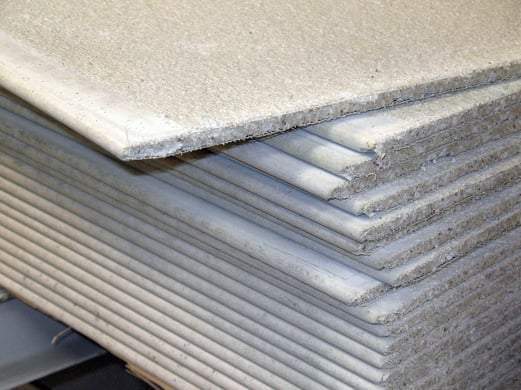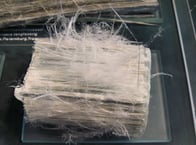Part 1: What is asbestos, and why was it used in homes?
Many homes, especially those built at the turn of the twentieth century, have siding or roofing shingles that contain asbestos. You may wonder: Do they pose a health hazard to your family? What happens when you try to remove them? Can you just leave them where they are? Why were they used in the first place?
In this series, we’ll explain a little about what asbestos is and why it was used in exterior home products like shingles and siding. Next week, we’ll explore the process for safe removal and replacement.
What is asbestos?
Asbestos is a naturally occurring mineral. Minerals are substances with a crystal structure, like gold, gemstones, talc, or quartz. Asbestos has a number of different varieties, but all have long, tiny, crystalline fibers. It has outstanding resistance to fire, heat, chemicals, and electrical damage, impressive tensile strength and insulating properties, and can be woven into fireproof fabric.
To impress guests at his lavish dinner parties, a great Persian king in the sixth century reportedly had an asbestos napkin that he cleaned by dramatically throwing it into the fire after a meal.

Why was it used in home building products?
Asbestos can be mixed into cement to make it much harder and more durable. In the early 1900s, most shingles were clay or slate, which are both heavy and expensive. Most siding was wood, which is flammable and prone to rot. Cement was too brittle and fragile to use as a good alternative to either – until asbestos was mixed in. Shingles and siding that were manufactured from a mix of asbestos fibers and hydraulic cement (sometimes called “Portland cement”) became very popular. Asbestos tiles and fiber cement siding were lightweight, cheap, rigid, durable, and fireproof. They did not warp or rot, were resistant to damage caused by insects, and could be made in custom colors. Although asbestos tiles didn’t last as long as slate, they had a typical lifespan of at least 30 years.
Because of its excellent insulation properties, asbestos-fiber insulation also became very popular as drywall (rather than lathe and plaster) became a more common material for interior walls. Asbestos was used in the drywall itself, as well as in joint compound, plaster, and texture coating material. Other home products that often contained asbestos were vinyl floor tiles, roof tar and felt, countertops, pipes, caulk, and “popcorn” (or “acoustic”) ceilings.
Artificial Christmas snow, commonly used in movies and department store windows and marketed for use in private homes under brand names that included "Pure White", "Snow Drift" and "White Magic" was pure asbestos. The “snow” scenes in White Christmas and The Wizard of Oz are two of the most famous examples.
Why is it no longer used?
Because of the nature of the tiny, sharp, fibers that make up asbestos, when a person breathes them in, they become embedded in the tiny passages of the lungs. The lungs cannot expel the fibers and instead become irritated and inflamed. When enough exposure occurs, scar tissue builds up around the fibers, and it becomes difficult to breathe. This chronic inflammatory condition is called “asbestosis,” and it can lead to death. Increased rates of lung cancer and mesothelioma (cancer of the membrane surrounding the lungs) have also been linked to inhaling asbestos fibers. As people started to notice increased rates of pulmonary problems in asbestos miners, factory workers, and others who were frequently exposed, laws and regulations were passed to protect the public. In 1989, the Environmental Protection Agency (EPA) issued an asbestos ban and phase-out rule, ending production of all new asbestos products in the United States.
In next week’s post, we’ll explore your options if you have asbestos products in your home’s roofing and siding. Stay tuned!
It’s spring, which means it’s a great time for roof maintenance! Regular professional roof inspections are an opportunity to check for roofing damage and complete necessary maintenance services to extend the life of your roof. Contact Hedrick Construction to schedule your Huxley, Des Moines, or Ames roofing services or roof inspection today.









Comments